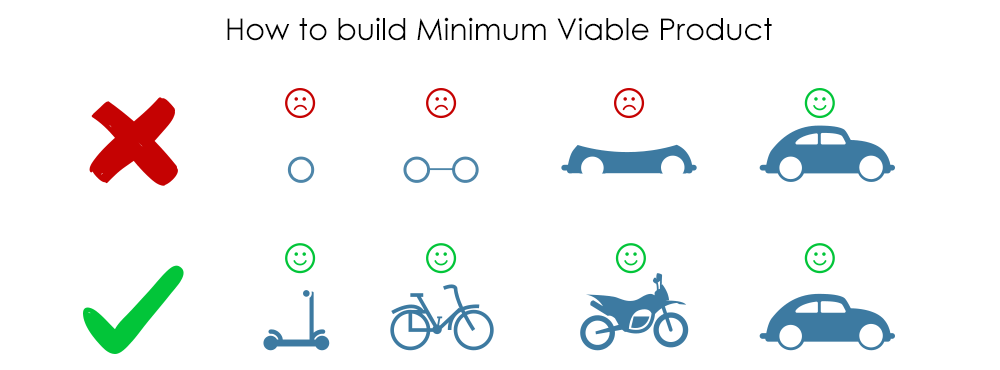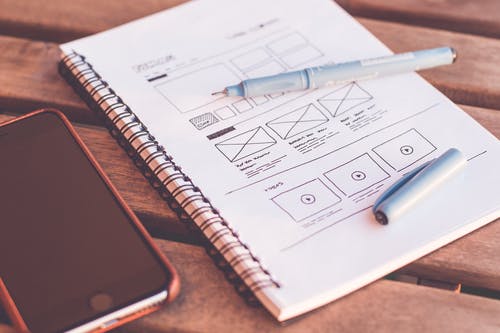Every business needs to know how to come up with innovative solutions for problems. Without this essential skill, a business will stagnate. To drive creativity in problem-solving, some of the world's most successful companies such as Apple, Google, and Airbnb use 'Design Thinking'. But what is this process, and what does it have to do with learning pathways?
What are learning pathways?
Learning pathways act as a constructed roadmap through learning content. They guide the learner through an ordered route of progression through the content, and show a clear way to move forward.
What is the problem with the creation of learning pathways?
Humans have the tendency to want to be perfectionists. Just that little bit more and we'll be ready.
The thought of releasing something that isn't perfect scares us so we don't ever start. Or if we do, we spend too long on it.
This is exactly what happens when designing Learning Pathways.
But here's the kicker....it'll never be perfect.
So what's the solution?....Design thinking
What is ‘design thinking’?
Design Thinking is a process which focuses on producing innovative and creative solutions to problems encountered by the end user.
The main objective behind Design Thinking is to improve a product or experience, by understanding exactly how it is currently being used and iteratively improving on it.
While the concept of ‘Design Thinking’ has evolved into many different variations, these five steps are the most important:
1. Empathise – with the needs and problems faced by your users.
2. Define – the needs and problems of your users.
3. Ideate – create new and innovative ideas.
4. Prototype – start creating solutions.
5. Test – test out solutions.
Next we'll teach you a technique which helps you go through all of these steps....
Find out how Learn Amp builds Design Thinking into their Digital Learning Platform Today
MVP (or Minimal Viable Product)

Most products / ideas are based on an assumption. Typically people then come up with all of the possible ideas to solve this assumption, and map them out and then don't release until they've ticked every single one off.
In contrast, this technique is about focussing on only the most critical of features and getting something released.
Some of the benefits of this are...
- This allows designers to focus on creating a product that solves a problem as quickly as possible
- Once this has been achieved you can make improvements based on data and feedback instead of assumptions
- You save time and cost by only building what you know customers need
How does this apply to Learning Pathways?
Pathways are like mini products and employees are your customers. Following the principles of design thinking and creating an MVP will help you get over that 'rabbit in the headlights' feeling.
Okay I get it, so how?
Empathise: Find out how your users are currently learning and what they like/dislike
- Run a user test : Sit with your learners and observe how they are currently learning. What do they struggle with? What is their body language? This doesn't have to be a 'like-for-like' to learn extremely valuable lessons
Define: Once you feel like you understand your employees issues, define them
- Write down all of the issues: Map out all of the problems you have identified
- Prioritise: Which ideas cropped up the most often? Which will have the biggest impact by solving?
Ideate: Work out what content you want to solve these problems
- Write down all of the possible solutions: There is likely more than one way to solve the problems in front of you - write them all down
- Prioritise: Looking at the different possible solutions you need to pick the one that you think will have the biggest impact (consider using the ICE score)
Prototype: Get something created as soon as possible
- Do you need to start from scratch?: Can you get a template for the pathway? Does the content already exist? (a content library, or free online sources)
- Break down your tasks: You can't do it all at once, so break it down into achievable actions over a series of days / weeks
- Communication is critical: Even when you break your tasks down and assign them to people make sure you are regularly collaborating with others on your team and sharing your progress, in case there are any major issues or misunderstandings
Test: Early feedback is key
- User test: Once again, user testing gives you a very clear understanding of what is working and what isn't. Get 3-10 people and gather very detailed feedback early on on what is working and what isn't (and adjust)
- Run a trial: Have a sample of people go through the learning pathway, leaving ratings and reviews and making notes of how it flows together. Doing it on a small sample, reduces any negative impact whilst giving you real insights
- The best test is to release!: Release the MVP to your users and you will no doubt hear first hand whether they are enjoying it or not, but you can also use a survey to gather specific feedback.
Top tips:
- Use existing content even if it's paid (compare to your time to create and the impact you could have by releasing earlier)
- Where you can't, use easy to use tools such as Knowbly, or build the content within your Digital Learning Platform
- Make sure that the DLP you choose (such as Learn Amp) has insights such as 'Most popular content' and 'Most completed content' to see what people love
- Check comments and reviews to see which is the highest rated content. Replace anything below 4 stars
- Analyse quiz scores. If they are below what is expected, look at the performance question by question to see if you've worded it wrong or not given enough supporting content
- Look at reporting across teams - are some teams performing much better? What can you learn about any additional support they are receiving that you might add in to the pathway



